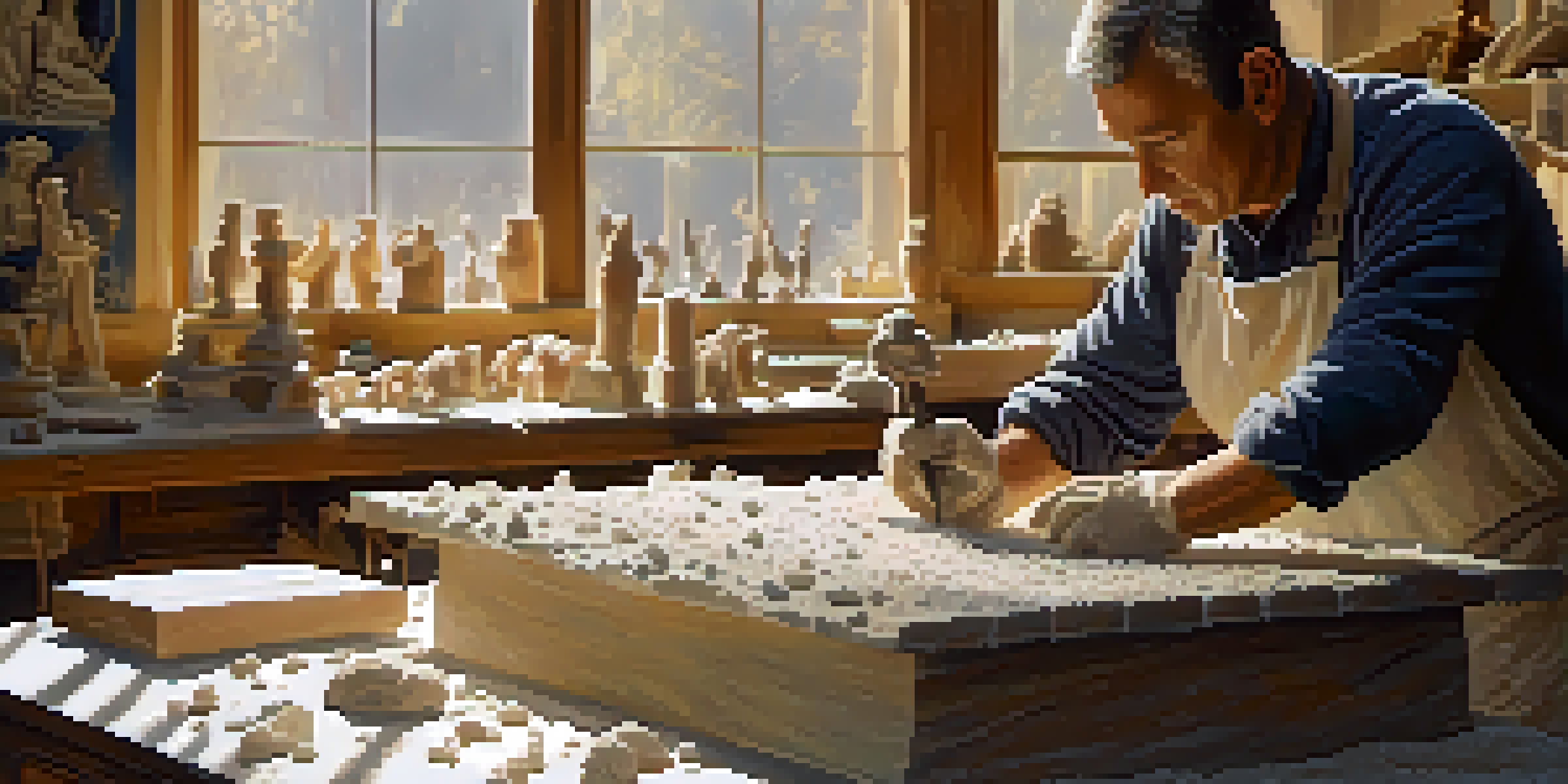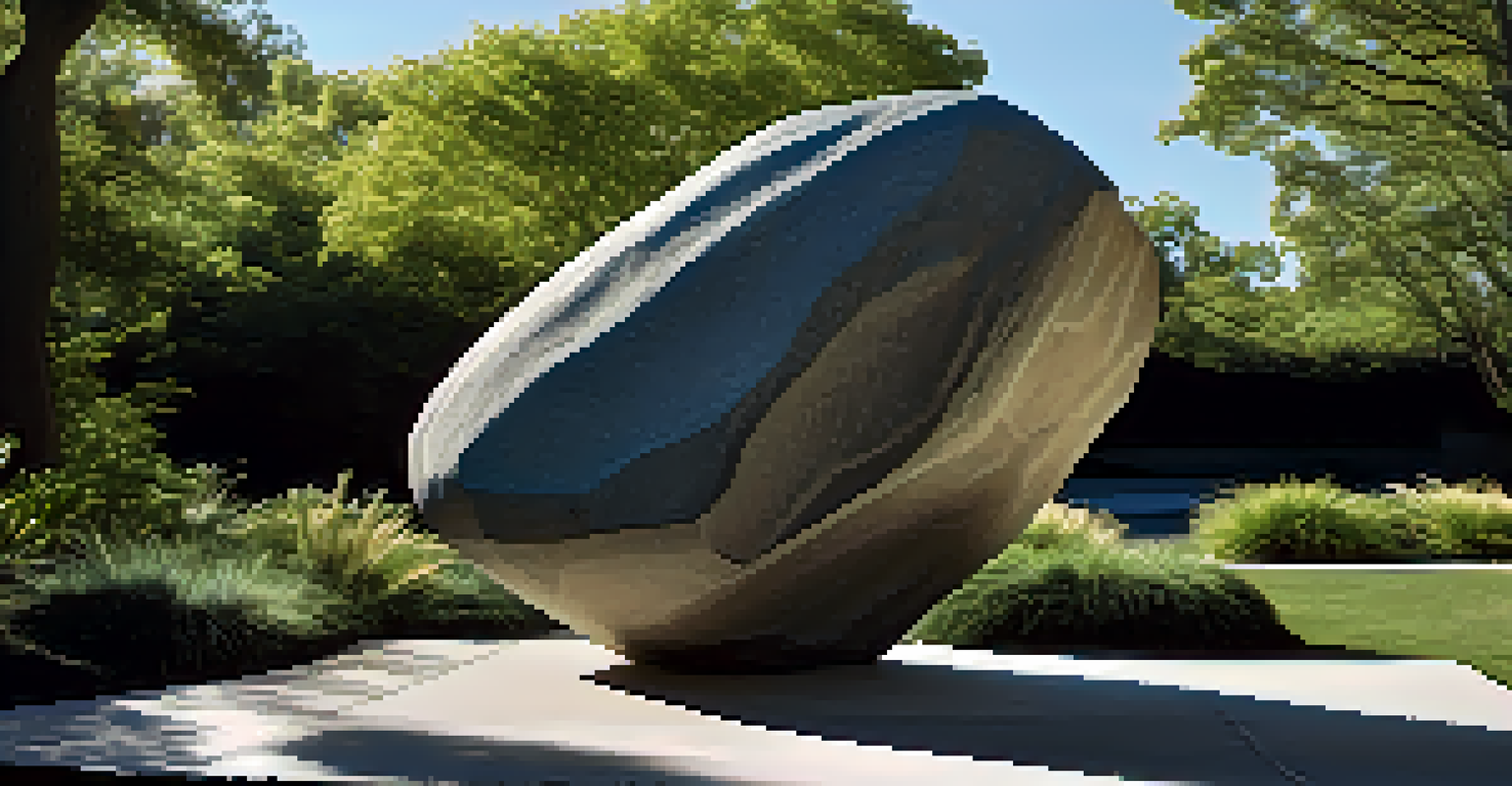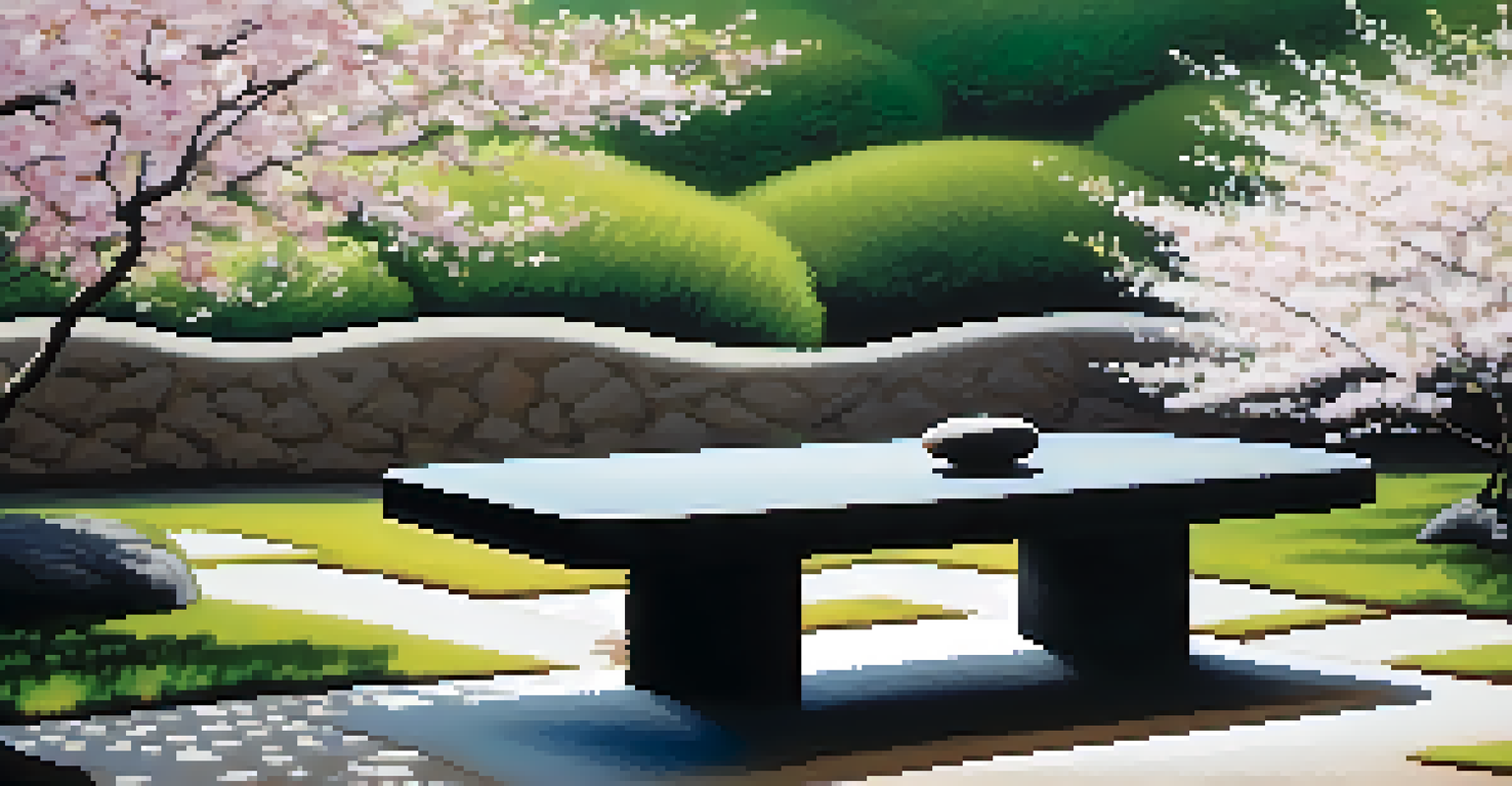Famous Stone Carvers: Influential Artists and Their Works

Introduction to Stone Carving and Its Significance
Stone carving is an ancient art form that transforms raw rock into breathtaking sculptures. This craft has played a vital role in human history, serving both functional and aesthetic purposes. From grand monuments to intricate details on buildings, stone carving has left an indelible mark on cultures worldwide.
I saw the angel in the marble and carved until I set him free.
The artistry involved in stone carving requires immense skill, patience, and a deep understanding of the material. Stone, with its unforgiving nature, challenges artists to envision and execute their ideas with precision. This delicate interplay between vision and technique sets the stage for some of the most celebrated stone carvers.
In this article, we will explore the lives and works of famous stone carvers who have shaped this art form. Their contributions not only highlight their individual creativity but also reflect the cultural and historical contexts of their times.
Michelangelo: The Master of Marble
No discussion of stone carving is complete without mentioning Michelangelo, a true Renaissance genius. His ability to breathe life into marble is legendary, with works like 'David' and 'Pietà' showcasing his extraordinary talent. Michelangelo's sculptures exhibit a remarkable understanding of human anatomy, emotion, and movement.

What sets Michelangelo apart is his belief that the figure exists within the stone, waiting to be released. He often said, 'I saw the angel in the marble and carved until I set him free.' This philosophy reflects a deep connection between the artist and his medium, resulting in sculptures that feel almost alive.
Stone Carving's Historical Significance
Stone carving has played a vital role in human history, serving both functional and aesthetic purposes across cultures.
Michelangelo's influence extends beyond his lifetime, inspiring countless artists and sculptors. His works are not just art pieces but also profound statements that continue to resonate with audiences today.
Auguste Rodin: The Poet of Stone
Auguste Rodin revolutionized stone carving by emphasizing emotion and movement in his sculptures. His famous work, 'The Thinker,' captures a moment of profound contemplation, showcasing his ability to convey complex emotions through stone. Rodin's style often blurred the lines between realism and abstraction, giving his pieces a unique dynamism.
The sculpture is the most complete art, combining all the elements of the visual arts.
Rodin believed that imperfections in stone could enhance the beauty of a sculpture, a departure from the traditional emphasis on flawless finishes. His approach invites viewers to appreciate the raw essence of the material, creating a dialogue between the sculpture and its audience.
Through his innovative techniques and expressive forms, Rodin has left an enduring legacy in the world of sculpture. His works continue to inspire artists to explore the emotional depths that stone can convey.
Bernini: Sculpting the Baroque Era
Gian Lorenzo Bernini was a pivotal figure in the Baroque movement, known for his dramatic and intricate sculptures. His ability to depict movement and emotion in stone made him one of the most celebrated artists of his time. Works like 'The Ecstasy of Saint Teresa' exemplify his mastery in capturing human emotion.
Bernini's sculptures often feature elaborate details and dynamic compositions, drawing viewers into the narrative of the piece. His work not only served as religious commentary but also showcased the grandeur of the Baroque style, characterized by ornate elements and emotional intensity.
Influential Stone Carvers
Famous artists like Michelangelo, Rodin, and Bernini have shaped the art of stone carving, each leaving a unique legacy that continues to inspire.
As a sculptor, architect, and painter, Bernini's influence was far-reaching, shaping the artistic landscape of the 17th century. His blending of various artistic disciplines set a new standard for future generations of artists.
Henry Moore: Modernist Stone Sculpture
Henry Moore stands as a significant figure in modern stone sculpture, known for his large-scale abstract forms. His work often draws inspiration from natural shapes and the human figure, blending organic and geometric elements. Moore's sculptures invite viewers to interact with them physically and emotionally, creating a unique experience.
Moore believed that stone should reflect its natural qualities, which is why many of his pieces retain their raw, unrefined edges. This approach not only celebrates the material itself but also encourages a deeper connection between the viewer and the sculpture.
Through his innovative methods and exploration of form, Moore has influenced contemporary sculptors and continues to inspire discussions around the role of stone in modern art.
Isamu Noguchi: Bridging Cultures with Stone
Isamu Noguchi was a Japanese-American artist who seamlessly blended Eastern and Western artistic traditions in his stone sculptures. His work often reflects a deep appreciation for nature, using stone to create harmonious forms that resonate with both simplicity and complexity. Noguchi's sculptures are not just art pieces but also serve as functional elements in landscapes and public spaces.
One of his notable works, the 'Noguchi Table,' exemplifies his philosophy of blending art and design. By using stone in innovative ways, he created pieces that are both aesthetically pleasing and practical, showcasing the versatility of the medium.
Contemporary Innovations in Carving
Modern stone carvers are pushing the boundaries of the craft by incorporating new techniques and themes, ensuring the art form remains dynamic and relevant.
Noguchi's legacy lies in his ability to transcend cultural boundaries through his art. His works continue to inspire a dialogue between different artistic traditions, highlighting the universal language of sculpture.
Contemporary Stone Carvers Making Their Mark
While historical figures have shaped the world of stone carving, contemporary artists are also making significant contributions. Today’s stone carvers explore new techniques and materials, pushing the boundaries of this ancient art form. They often incorporate modern themes and technologies, creating a dialogue between tradition and innovation.
Artists like Andy Goldsworthy use natural stone in outdoor installations, emphasizing the relationship between art and nature. His ephemeral works remind us of the fleeting quality of beauty, challenging conventional notions of permanence in sculpture.

The contemporary stone carving scene is diverse and vibrant, with artists continually experimenting and redefining what stone can represent. This evolution ensures that stone carving remains a relevant and dynamic art form.
Conclusion: The Enduring Legacy of Stone Carving
The art of stone carving has a rich history, marked by the extraordinary contributions of influential artists. From the timeless works of Michelangelo to the contemporary explorations of modern sculptors, the craft continues to evolve while retaining its core essence. Each artist brings a unique perspective, enriching the legacy of stone carving.
As we admire these masterpieces, it's essential to recognize the skill, passion, and dedication that goes into each piece. Stone carving is not just about creating art; it's about forging connections between the artist, the medium, and the viewer.
The enduring legacy of stone carvers serves as a reminder of the power of creativity and the timeless beauty that can emerge from a simple block of stone. Their works inspire future generations to explore and appreciate the art of carving.